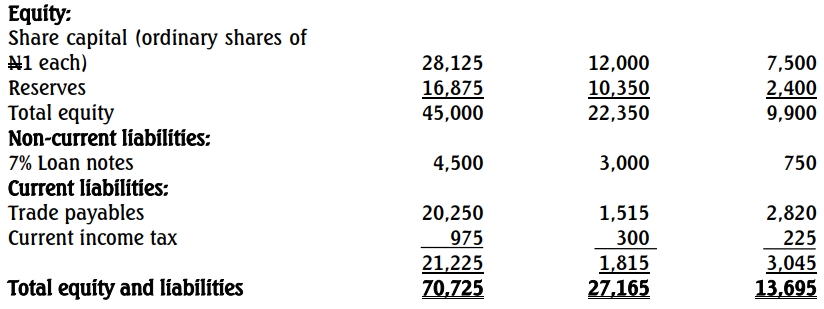Femi Appliances Limited (FAL) is a Nigerian-based manufacturer of household appliances with many distribution centers across various locations in Nigeria and along the ECOWAS sub-region. FAL is now considering the development of a new motor vehicle vacuum cleaner – VC4.
The product can be introduced quickly and has an expected life of four years, after which it may be replaced with a more efficient model. Costs associated with the product are estimated as follows:
Direct Costs (per unit):
- Labour:
- 3.5 skilled labour hours at ₦500 per hour
- 4 unskilled labour hours at ₦300 per hour
- Materials:
- 6 kilos of material Z at ₦146 per kilo
- Three units of component P at ₦480 per unit
- One unit of component Q at ₦640
- Other variable costs: ₦210 per unit
Indirect Costs:
- Apportionment of management salaries: ₦10,500,000 per year
- Tax allowable depreciation of machinery: ₦21,000,000 per year
- Selling expenses (excluding salaries): ₦16,600,000 per year
- Apportionment of head office costs: ₦5,000,000 per year
- Rental of buildings: ₦10,000,000 per year
- Annual interest charges: ₦10,400,000
- Other annual overheads: ₦7,000,000 (includes building rates ₦2,000,000)
If the new product is introduced, it will be manufactured in an existing factory, having no effect on rates payable. The factory could be rented out for ₦12,000,000 per year to another company if the product is not introduced.
New machinery costing ₦86,000,000 will be required, depreciated on a straight-line basis over four years with a salvage value of ₦2,000,000. The machinery will be financed by a four-year fixed-rate bank loan at 12% interest per year. Additional working capital requirements may be ignored.
The new product will require two additional managers at an annual gross cost of ₦2,500,000 each, while one current manager (₦2,000,000) will be transferred and replaced by a deputy manager at ₦1,700,000 per year. Material Z totaling 70,000 kilos is already in inventory, valued at ₦9,900,000.
FAL will utilize the existing advertising campaigns for distribution centers to also market the new product, saving approximately ₦5,000,000 per year in advertising expenses.
The unit price of the product in the first year will be ₦11,000, with projected demand as follows:
- Year 1: 12,000 units
- Year 2: 17,500 units
- Year 3: 18,000 units
- Year 4: 18,500 units
An inflation rate of 5% per year is anticipated, with prices rising accordingly. Wage costs are expected to increase by 7% per year, and other costs (including rent) by 5% annually. No price or cost increases are expected in the first year of production.
Income tax is set at 35%, payable in the year the profit occurs. Assume all sales and costs are on a cash basis and occur at the end of the year, except for the initial purchase of machinery, which would take place immediately. No inventory will be held at the end of any year.
Required:
a. Calculate the expected internal rate of return (IRR) associated with the manufacture of VC4. Show all workings to the nearest ₦million. (19 Marks)
b. i. Explain what is meant by an asset beta and how it differs from an equity beta. (2 Marks)
ii. Given the company’s equity beta is 1.2, the market return is 15%, and the risk-free rate is 8%, discuss whether introducing the product is advisable. (4 Marks)
c. The company is concerned about a potential increase in corporate tax rates. Advise the directors by how much that the tax rate would have to change before the project is not financially viable. A discount rate of 17% per year may be assumed for part (c). (5 Marks)




